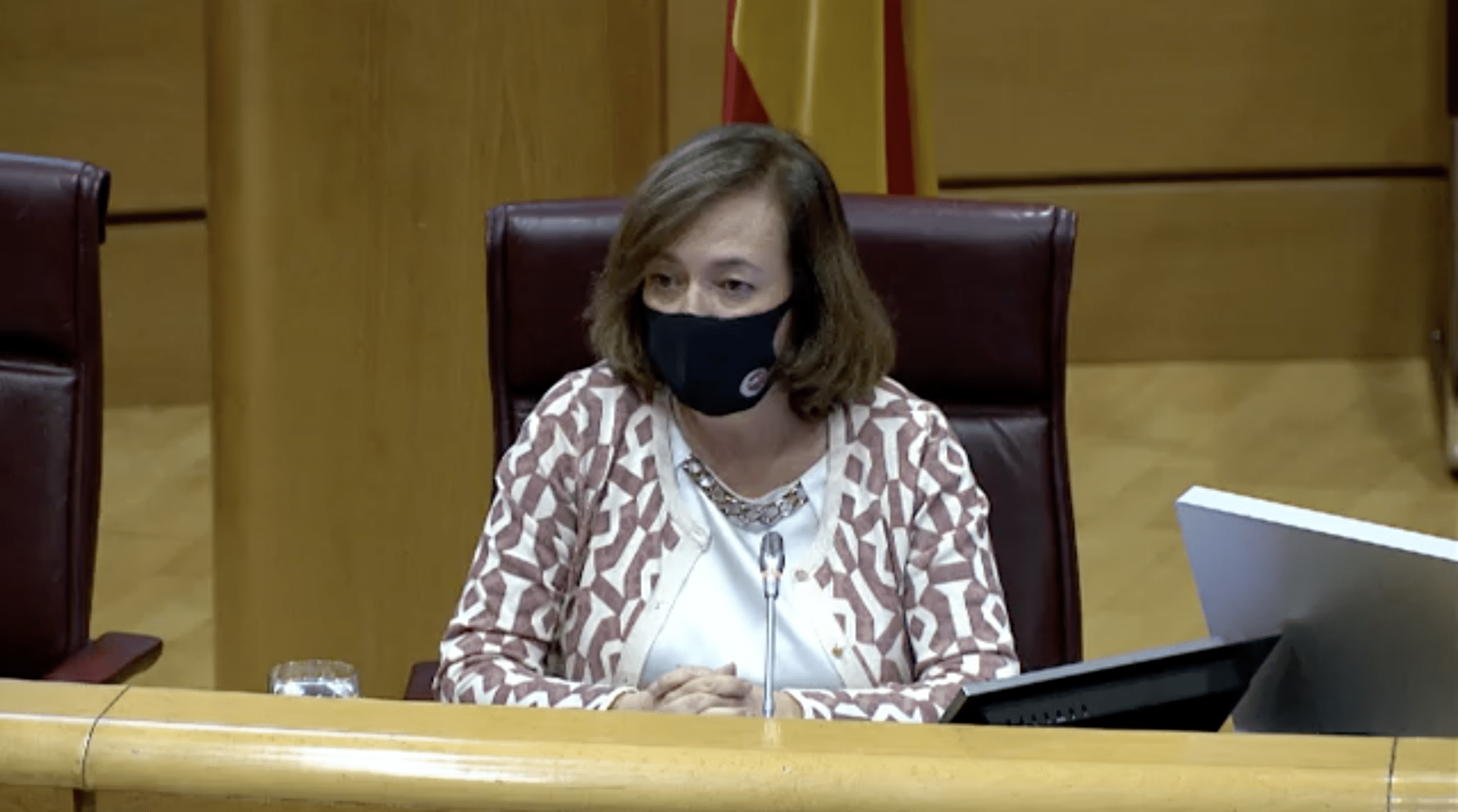- The Institution revises its deficit forecast for 2021 to stand at 7.3% of GDP and maintains the 2022 forecast at 5% of GDP
- This revision follows the incorporation of new macroeconomic and budgetary information since publication of the last Report on October 25th
- Cristina Herrero described 2022 as a decisive year, marked by a high level of uncertainty and major challenges, including possible deactivation of the escape clause in 2023 and the implementation of the Recovery, Transformation and Resilience Plan (RTRP)
- The President stressed the need for the planning of a comprehensive medium-term strategy, both in economic and budgetary matters
The president of the Independent Authority for Fiscal Responsibility (AIReF), Cristina Herrero, appeared today before the Senate (Upper House) Budget Committee to present the Report on the Main Budgetary Lines and Draft Budget of the General Government (GG) for 2022. In her speech, she explained the conclusions of this Report, which was previously presented to the Lower House of Parliament on October 25th, and analysed the changes that have subsequently taken place following the incorporation of new macroeconomic and budgetary information.
In October, AIReF lowered its Gross Domestic Product (GDP) growth forecasts for 2021 and 2022 to 5.5% and 6.3%, respectively, compared with the 6.5% and 7% projected by the Government.
This revision is mainly due to two factors. Firstly, the incorporation of the quarterly accounts figures published by the National Statistics Institute (Spanish acronym: INE) at the end of September, following issuance of the endorsement, entailed a significant downward revision. Secondly, AIReF’s scenario now incorporates the materialisation of some of the risks foreseen in September, particularly those related to the rise in energy prices and the shortage of industrial supplies.
Regarding the deficit, in its Report, AIReF estimated that, excluding the impact of the REACT-EU funds, the deficit would stand at 7.7% of GDP in 2021 and at 5% in 2022. The Next Generation EU Funds have a neutral impact on the National Accounts, the President explained.
In addition, in this Report, the Institution forecast that revenue, excluding REACT-EU and the Recovery and Resilience Facility (RRF), would stand at 40.2% of GDP in 2022, compared with the 39.8% forecast in the Budgetary Plan, and that expenditure, excluding REACT-EU and the RTRP, would stand at 45.2% in 2022, compared with 44.7% in the Budgetary Plan. In addition, the improvement in GDP, the recovery in the cyclical component of the deficit and the gradual disappearance of pandemic-related measures project a reduction of 4.3 points in the debt ratio for 2022, which will stand at 115.7% of GDP. However, AIReF notes an unfavourable trend in the medium and long term.
Revision of the forecast of the GG deficit
After explaining the conclusions of the Report published in October, Cristina Herrero analysed the new information published since then and the impact this has had on the forecasts. Specifically, new information has been incorporated into the macroeconomic and budgetary scenario and AIReF has published the Individual Reports on the Autonomous Regions (ARs) and the Supplementary Report on the Local Governments (LGs).
With the new data, AIReF’s deficit forecast for 2021 improves by 0.4 points to stand at 7.3%. For the Central Government, the Institution estimates an increase in the revenue forecast, especially for the second instalment of Corporate Income Tax. For the Social Security Funds, AIReF forecasts an increase in pension expenditure due to the upward revision of the 2021 Consumer Price Index (CPI) forecast (2.5%). In addition, the individual reports on the ARs and the supplementary reports on the LGs confirm the estimates of the report published in October.
For 2022, in a scenario in which the factors tend to offset each other, AIReF’s forecast maintains the deficit at 5% of GDP. The Institution considers that part of the improvement in the revenue forecast for the Central Government is carried over to 2022 by raising the starting level. For the Social Security Funds, there is an increase in pension expenditure due to the upward revision of the 2021 CPI forecast and a higher starting level. At the level of the ARs, some have included transfers in their revenue budgets that are not included in the General State Budget (GSB) and/or forecasts above the reference rate. Finally, the individual analysis of the LGs confirms the forecasts of the report published on October 25th, which estimated a reduction in the surplus to 0.2% of GDP for 2022.
Cristina Herrero explained that, at any event, 2022 will be a decisive year marked by a high level of uncertainty and major challenges. On the one hand, the lack of certainty at a macroeconomic level is compounded by the institutional factors that, at this time, raise major questions both externally – such as the possible deactivation of the escape clause in 2023 – and nationally, with the implementation of the RTRP, since maximising its impact on growth requires appropriate ex ante, ongoing and ex post evaluation.
In addition, AIReF’s President stressed the need for the planning of a comprehensive medium-term strategy, both on economic and budgetary matters.
Recommendations
With this scenario, the Institution recommends that the entire GG adopt the necessary measures so that the fiscal space left by the withdrawal of the measures to combat COVID-19 and the positive evolution of revenue lead to a sustained path of public deficit reduction. In particular, AIReF also notes that increases in structural expenditure that do not have a permanent source of funding should be avoided.
It also reiterates the need for medium-term strategies that integrate various elements, such as RTRP reforms and investments, consolidation of the recovery and reduction of the debt to levels of lower vulnerability.







